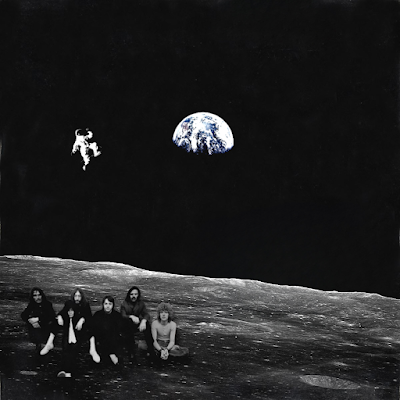Following the release of Get Back and their return to live performances, The Beatles were in the mood to write and record together. This would be the first recording sessions since The Beatles in early 1968 to have no large conflict whatsoever. David Bowie would be thanked for that, bringing John Lennon, Paul McCartney and George Harrison together in a way that would benefit the group as a whole. Bowie would also be to blame for their next single and the band's biggest song since "Hey Jude". On 25 July 1969, the Beatles would release "Space Oddity", just in time for the Apollo 11 Moon landing, which had concluded the previous day. The song would be an immediate smash hit and would be the impetus for the remainder of the sessions leading up to the release of their next album. On August 22, 1969, The Beatles would perform the song on The Tonight Show Starring Johnny Carson, with universally positive reviews from everyone watching. The song's B-side "You Know It Ain't Easy" would receive minor backlash for using the word "Christ".
Following the hype of the Moon landing and the smash success of their latest single, the band decided that their next album's concept would be space-themed. Songs written before the decision would be mixed in with songs after to make one cohesive statement that the band could be proud of. McCartney had producer George Martin and his orchestra work overtime to capture the feeling of space and all its majesty. Songs were worked and reworked multiple times during the sessions to make sure every aspect was perfect. McCartney would later say he hadn't felt this good about an album on release since From Liverpool.
It was also McCartney's idea to throw some unused song ideas he had lying around into a side-length medley that would close the album. Lennon would throw some of his old ideas, dating to their trip to India, into the mix, and Bowie would write some new bits of his own to include. The medley would be well received for how each song nicely transitioned to the next without sacrificing any details. Due to Bowie's massive backlog of songs that Lennon and McCartney allowed for him to add to the album, George Harrison would feel more pushed to the corner then he had ever been before. For the first time ever, Bowie had more songs then Harrison, despite Harrison being the senior member. This would negatively affect his stance towards working with the group for some time.
Finally, on November 14, 1969, the album Space Oddity released. It was immediately met with universally positive reviews from everyone, citing its cohesiveness and its simple sound compared to their previous outings. Retrospectively, it is still considered one of the greatest albums of all time, alongside the likes of From Liverpool and Ziggy Stardust. People consider this album to be the exact point in which David Bowie became a strong and confident songwriter and even a star in his own right. Following its release, the Beatles would take a good half-year to themselves before returning to the studio to record another masterpiece.
For Sides A-C, all of Bowie's songs are from Space Oddity, and the Beatles' songs are from Abbey Road, Let It Be ("Two of Us" is from Naked), McCartney, Imagine and All Things Must Pass.
For Side D, all songs segue into the next one. All tracks from the medley on Abbey Road are used, as well as "The Supermen" and "Black Country Rock" from The Man Who Sold the World, "Come and Get It" from Anthology 3, and "Right On, Mother" from Divine Symmetry. A mix is in the works so that the entire thing can be listened to without any editing from the reader's part. "Blue Moon", a hidden track, is from the 50th Anniversary edition of The Beatles.
 |
| Back cover |




No comments:
Post a Comment